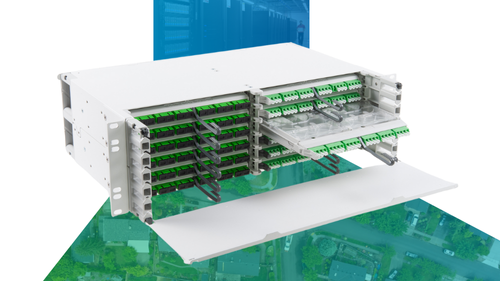 1. Start easy…
1. Start easy…
Starting is always hard. One of the first steps in creating a PON network is deploying central office based or remote OLTs. Onboarding these devices can be particularly challenging due to the popular OLT design where the control plane software resides in each device. That’s because Specialized technicians need to preform software updates, system testing, and other tasks on each OLT—adding time and complexity to network rollouts. To reduce the risk, consider a software-defined network (SDN) architecture that leverages a cloud- or COTS-based domain controller. With an SDN architecture, new physical and virtual OLTs are automatically recognized on power up, with hands-free automation that can be used to onboard devices quickly and without the need for highly skilled network engineers.
…and grow quickly
Similar challenges exist in the growth of PON networks, where the ability to add ports to the network quickly can be critical. With legacy systems, onboarding new OLTs is a highly manual process that requires highly trained staff. But next generation PON systems with disaggregated control and management planes allow service providers to leverage tried-and-true IT practices to scale. An OLT can be installed with a minimum capacity, then additional ports can be added as needed very quickly, since the required control plane resources such as compute and memory reside in the cloud.
2. Make maintenance simple…
Maintaining PON networks traditionally has been a complex and time-consuming endeavor that has required specialized staff. But a modern SDN management framework with open north bound interfaces and intelligent automation can simplify and streamline maintenance. Here, service providers can create and customize powerful GUI-based management applications with closed loop automation capabilities. These intelligent management systems make it easy for staff to perform basic PON maintenance tasks, such as software upgrades, configuration back-ups, and resiliency testing. Easy to learn and operate, they also expedite training and bring advanced functions within reach for employees with varying experience, freeing highly skilled engineers for more strategic tasks.
…and reduce power consumption
PON networks can require substantial electrical power to operate, so it is important for service providers to architect their next generation networks with efficiency in mind. One way to do this is with an architecture that reduces the processing and cooling requirements for OLTs by centralizing control plane functions within the data center or cloud. Using shared compute resources in this architecture is inherently more power efficient than distributing these workloads across the OLTs in the network. In addition, removing the control plane computing requirements from the OLTs means that they create less heat and can leverage passive cooling techniques, rather than fans, for heat dissipation. This further reduces electrical costs and reduces the potential for failures within the OLT.
3. Keep customers happy…
Improving the subscriber experience begins by keeping uptime as high as possible, and one proven way to do that is with a sophisticated service assurance platform. But sophisticated doesn’t have to mean complicated. Look for a predictive, proactive service assurance system built on machine learning and AI, which collects key information about the health of the network, centralizes it, and provides real time visibility to the organizations and applications that rely on it. In many cases, machine learning and AI can then be employed to resolve small issues automatically—before they grow and create downtime.
…while maintaining a competitive edge
The long-term competitive race won’t center around speeds and feeds alone. Service providers will soon be competing on advanced services such as VPNs, traffic prioritization, 5G backhaul, and unified communications to go beyond bandwidth and deliver next-level subscriber value. But the current method of bundling new features with infrequent network hardware updates has the potential to slow the rollout of advanced features and leave service providers at a competitive disadvantage. But a modern SDN decouples new features from the control plane and, instead, runs them in a cloud-based domain manager. This means software teams can create and deploy advanced capabilities on their own development schedules, making them available to subscribers quickly and updating them as often as is needed to keep their competitive advantage.
Ready to learn more?
CommScope recently released the next chapter in its eBook that outlines the most important considerations for service providers as they plan their next generation PON architectures. It’s called “A Comprehensive Guide to Next-Gen PON Decisions” and the first two chapters are available now. We’ll continue releasing new content in this eBook in the coming months, and we hope you’ll stay with us on your journey to next generation PON.














